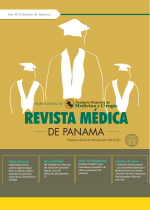Urgencias dermatológicas: ¿realmente existen?
Autores/as
DOI:
https://doi.org/10.37980/im.journal.rmdp.2017473Resumen
[Dermatologic emergencies: do they really exist?]
Resumen
En un servicio de Urgencias frecuentemente consultan pacientes con patologías cutáneas, por lo que para el médico emergentólogo o aquel médico de primer contacto, es fundamental diferenciar entre las afecciones cutáneas que podrían poner en peligro la vida del paciente de forma aguda y aquellas que no son tan graves pero que, por la cantidad de lesiones llamativas o por su extensión, pueden confundirse con verdaderas urgencias cutáneas.
Son pocas las patologías dermatológicas que pueden poner en riesgo la vida de manera inmediata, estas son las urgencias absolutas. Las mismas deben ser tratadas sin retraso, pues de lo contrario, existe un elevado riesgo de muerte o de secuelas irreversibles. Entre éstas podemos citar la necrolisis epidérmica tóxica / síndrome de Stevens Johnson, la reacción a drogas con eosinofilia y síntomas sistémicos (DRESS, por sus siglas en inglés), la eritrodermia por múltiples causas, entre otras.
La gran mayoría de los casos, sin embargo, son urgencias relativas. En este grupo, debido al aspecto aparatoso de las lesiones, los pacientes acuden al servicio de urgencias con ansiedad y preocupación; pero su vida no se encuentra en riesgo de forma inmediata. Algunos ejemplos de estas enfermedades son los brotes de psoriasis, prurigos diseminados, sarna costrosa, herpes zoster, entre otras.
Abstract
It is very frequent to see patients with skin diseases at the emergency room, therefore the emergency physicians or the first contact physicians, should be prepared to recognize and differentiate between diseases that can immediately endanger the life of the patient and others that are not as serious but, because of the amount or the extension of the lesions can be confused with true cutaneous emergencies.
There are few skin diseases that can immediately be life threatening, these are the absolute emergencies. They should be treated without delay; otherwise there is a high risk of death or irreversible sequelae. Among these we can mention drug eruptions such as toxic epidermal necrolysis / Stevens - Johnson syndrome, the drug reaction with eosinophilia and systemic symptoms (DRESS), erythroderma from multiple causes, among others.
The great majority of the cases, however, are relative emergencies. In this group, because of the shocking appearance of the lesions, patients come into the emergency room with high levels of anxiety and concern; but their lives are not in an immediate danger. Some examples of these diseases are psoriatic flares, disseminated prurigos, crusted scabies, herpes zoster, among others.
Publicado
Número
Sección
Licencia
Derechos autoriales y de reproducibilidad. La Revista Médica de Panama es un ente académico, sin fines de lucro, que forma parte de la Academia Panameña de Medicina y Cirugía. Sus publicaciones son de tipo acceso gratuito de su contenido para uso individual y académico, sin restricción. Los derechos autoriales de cada artículo son retenidos por sus autores. Al Publicar en la Revista, el autor otorga Licencia permanente, exclusiva, e irrevocable a la Sociedad para la edición del manuscrito, y otorga a la empresa editorial, Infomedic International Licencia de uso de distribución, indexación y comercial exclusiva, permanente e irrevocable de su contenido y para la generación de productos y servicios derivados del mismo. En caso que el autor obtenga la licencia CC BY, el artículo y sus derivados son de libre acceso y distribución.






